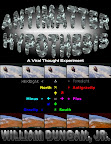Davide De Martin (ESA/Hubble)
Harvesting the intergalactic medium globular clusters spawned from elliptical galaxies increase in size into irregular dwarf galaxies.
A baby galaxy emits glowing hydrogen gas in a galaxy cluster. Elliptical galaxies are preferentially located at the cores of galaxy clusters.
TNJ1338: NASA, ESA, G. Miley (Leiden Observatory) and R. Overzier (Leiden Observatory)
A massive elliptical galaxy resides in the core of a galaxy cluster.
Galaxies cluster together since siblings are born of the same parent.
NASA’s Galaxy Evolution Explorer found three-dozen local newborn galaxies. Creation is happening at all distances, which supports cyclical cellular cosmology over Big Bang mythology.
With galaxies multiplying all around. Some are bound to come in contact.
Hubble offers a collection of images of merging galaxies.
With so many merging galaxies to study, surely some galaxies should exhibit artifacts of interactions between normal gravity and antigravity. On those occasions a pair of neighboring galaxies should gravitationally repel each other, which is expected behavior should normal gravity and antigravity coexist in the universe.









No comments:
Post a Comment